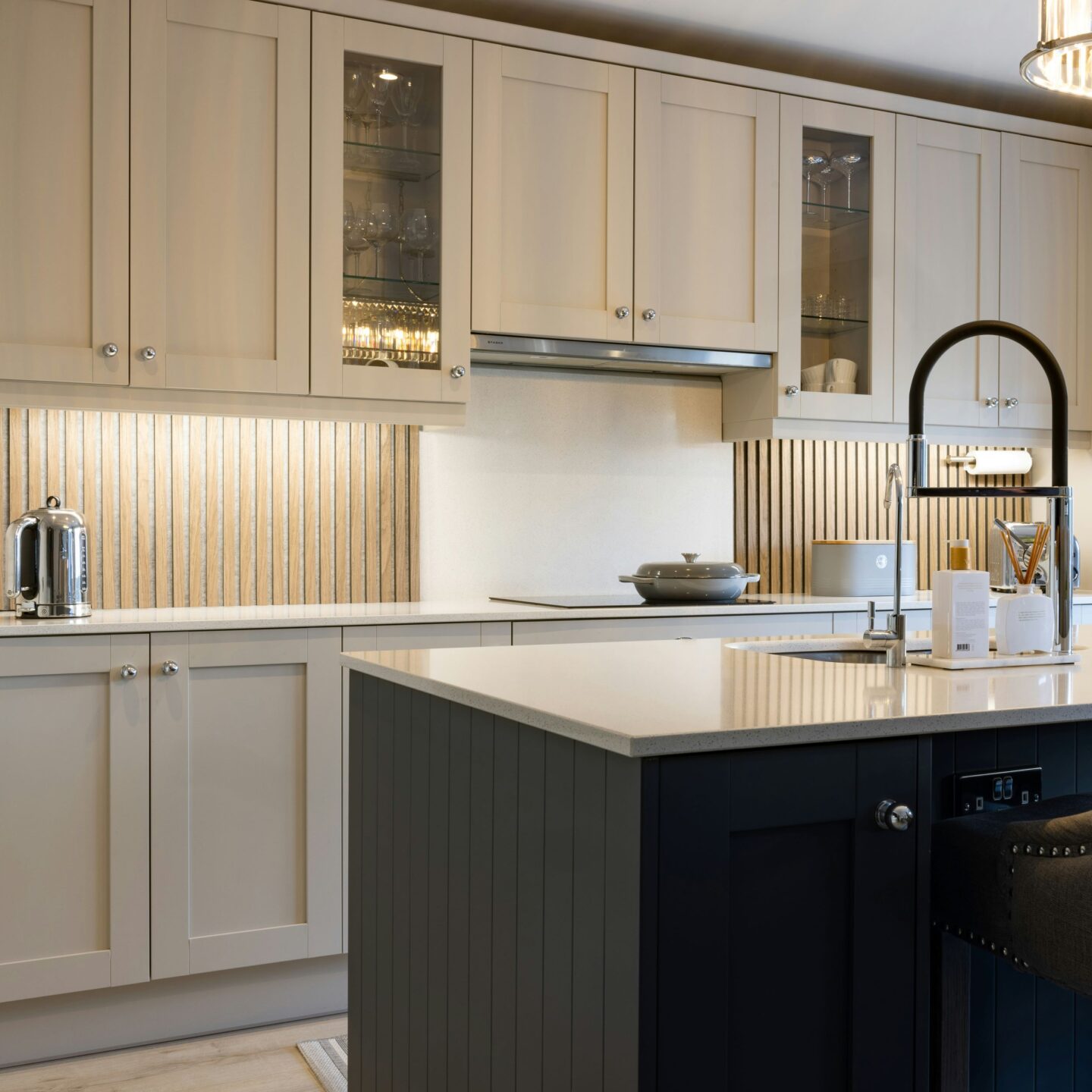
Wainscot wall panelling, a harmonious blend of traditional charm and contemporary design, is a favoured choice for home interior enhancement. As experts in the field of stunning interiors, The Wood Veneer Hub presents an exploration into the history, variety, and advantages of wainscoting, along with its role in elevating home design.
Originating in early English architecture, wainscoting began as a functional element for insulation and wall protection, featuring wooden panels extending from the floor, often covering the lower part of the wall.
Through the centuries, wainscoting evolved from its practical use. By the 18th century, it had become a mark of sophistication and taste in interior design. This period saw a diversification in styles and materials, from the ornate raised panels in Victorian houses to the simpler lines in contemporary settings.
In modern times, wainscoting marries traditional and modern influences. It has transformed from a mere protective and insulating tool into a distinctive aesthetic element. From detailed panels in classic rooms to the minimalist shaker style in current home designs, wainscoting exemplifies its adaptable nature in the dynamic field of interior design.
Styles of Wainscoting
Wainscoting is available in a variety of styles, each offering a distinct look to suit a range of home designs, depending on personal tastes and the overarching design theme.
Raised Panel Wainscoting: This timeless style is a feature of traditional and colonial homes, with panels protruding from the wall for a three-dimensional look.
Flat Panel or Shaker Wainscoting: Favoured in contemporary and modern homes for its minimalistic appeal, this style presents a clean, refined appearance.
Beadboard Wainscoting: Comprising vertical wood planks, beadboard provides a quaint, rustic charm, ideal for country or coastal homes.
Board and Batten: This style alternates between wide boards and narrow strips (battens), offering a structured, geometric design suitable for various settings.
Overlay Wainscoting: As a decorative choice, overlay wainscoting features panels with extra moulding, creating a more intricate and detailed look.
Traditional wood remains the classic material choice, yet modern options like MDF, PVC, and tile are becoming favoured for their durability and ease of upkeep.
Advantages of Wainscoting
Wainscoting is more than a decorative feature, and in fact offers several practical benefits. Its aesthetic enhancement adds depth and character to rooms, potentially increasing home value. Functionally, it still serves to protect walls from damage, especially in busy areas.
Its design flexibility is a notable advantage, with styles and materials fitting a range of interior themes from rustic to modern. Wainscoting also provides thermal insulation and helps reduce dampness, echoing its original purpose. Additionally, it’s an effective way to hide wall imperfections, ensuring a polished look. This blend of function and aesthetics makes wainscoting a favoured choice for home improvement.
Design Considerations and Ideas
Integrating wainscoting into your home requires thoughtful consideration of design elements. The style should align with the room’s theme, such as rustic beadboard for country kitchens or sleek flat panels for contemporary spaces. The choice of colour and finish is crucial; options range from matching wall tones for subtlety to contrasting colours for impact. The wainscoting height should be proportionate to the room, usually covering one-third of the wall, adjusted according to room size.
In moisture-prone areas like bathrooms, choosing durable materials such as PVC is vital. Wainscoting can also complement architectural features like crown moulding. Personalising with unique colours or patterns makes wainscoting a true reflection of your style, enhancing your home’s overall appeal.
Installation Tips
Installing wainscoting can be a fulfilling DIY project. Here are tips to assist you:
- Measure accurately before buying materials to ensure you get the correct amount of panels and moulding.
- Essential tools include a saw, level, nail gun, and caulking gun.
- Prepare the walls by ensuring they are smooth and clean.
- Plan your design in advance, deciding on the wainscoting height and fit around corners and doors.
- Test fit panels before securing them to identify any needed adjustments.
- Use a strong adhesive and nails to secure panels for added stability.
- Fill nail holes with wood filler and apply caulk along edges for a seamless appearance.
- Finish with paint or stain as desired.
Maintenance and Care
Proper maintenance is key to keeping your wainscoting in top condition:
Regularly dust and clean with a soft cloth or duster. For deeper cleaning, use a damp cloth with mild soap, avoiding excessive moisture, especially on wood.
Address spills and stains immediately with gentle cleaning agents to avoid damage.
Stay away from abrasive cleaners and harsh chemicals that could harm the finish.
Consider repainting or restaining periodically to refresh its appearance, depending on wear and use.
Regularly inspect for damage like chipping or cracking, and repair promptly to extend its lifespan.
Enhancing Your Home with Wainscoting
Wainscoting offers a creative way to enhance both the aesthetic and functional aspects of a home. It’s particularly appealing to DIY enthusiasts and design-conscious homeowners. With careful selection, installation, and maintenance, wainscoting serves as a timeless addition, fusing beauty and utility in home interiors.
Post in collaboration